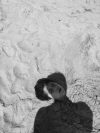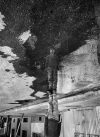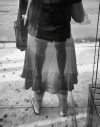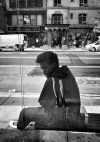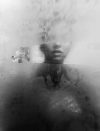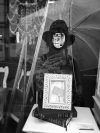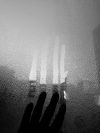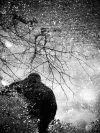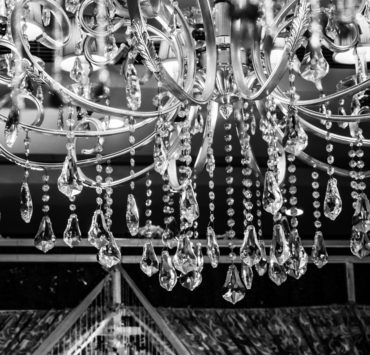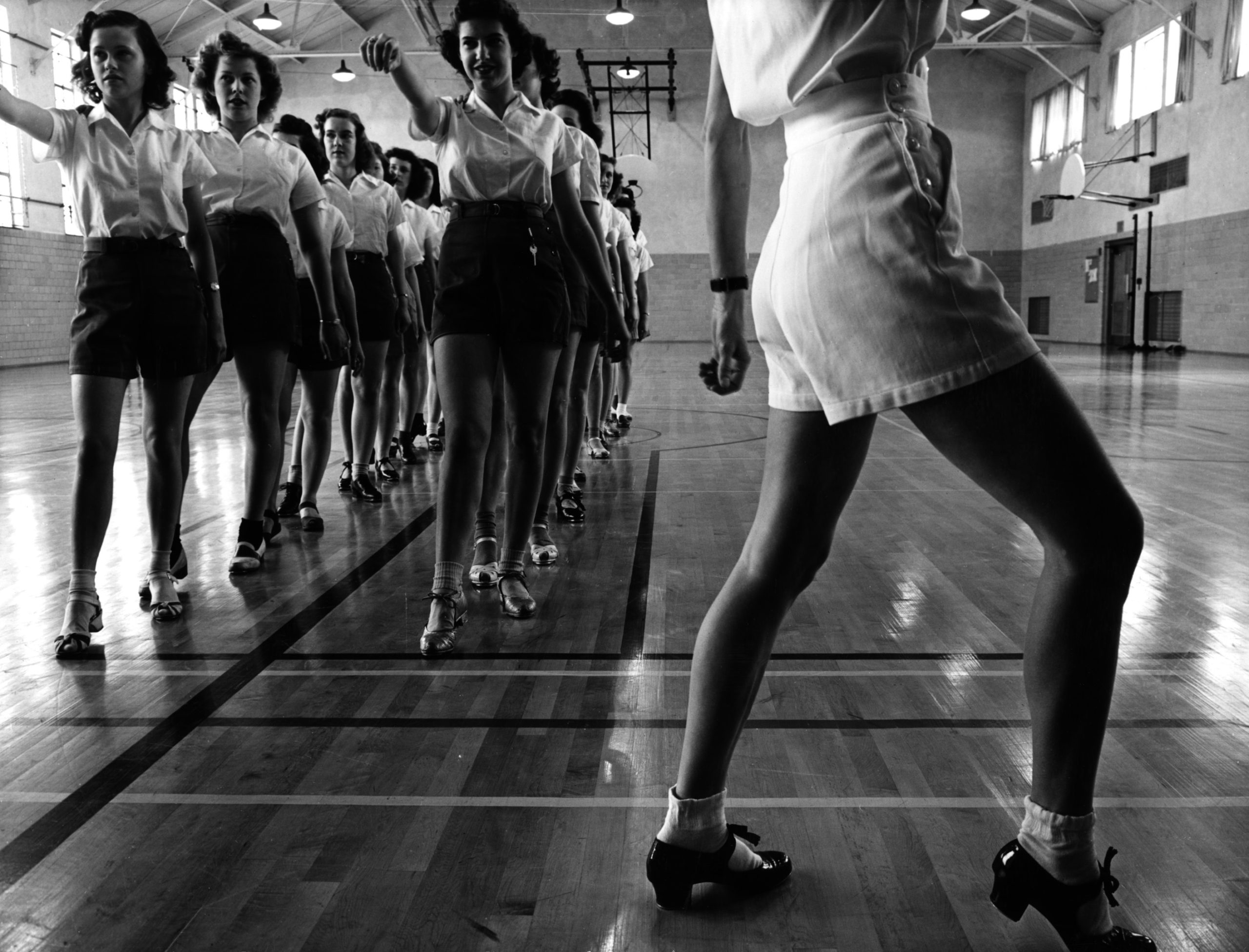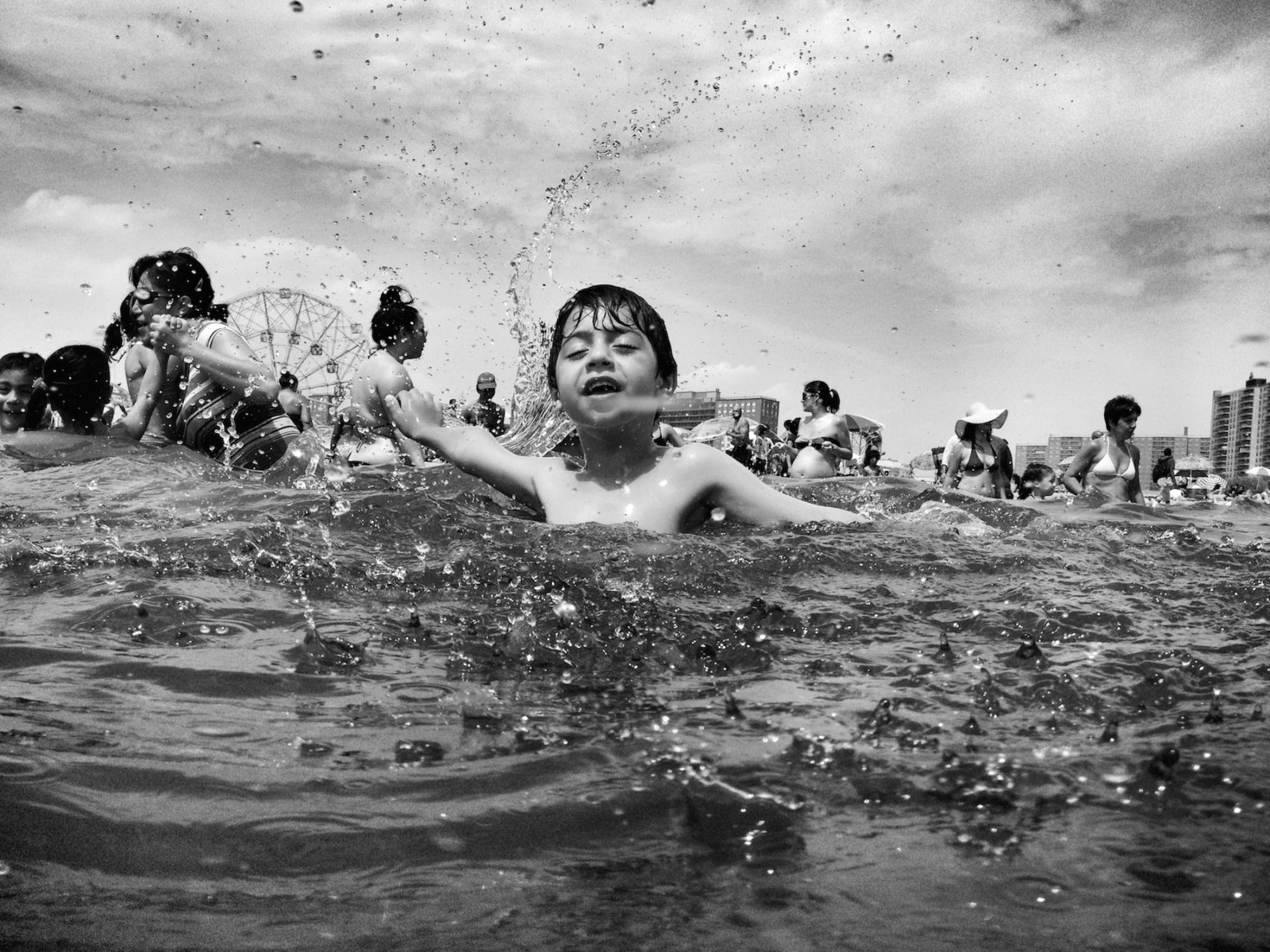
Erika Morillo was born and raised in the Dominican Republic, is a freelance documentary photographer based in New York City. Her work is featured on the cover of FALL 2017 Issue: Dirty Laundry.
Clarissa León: The connection you have with your son clearly compels you in unique directions with your photography. Can you speak more about the directions and the ways in which you envision your documentary photography as your son grows older?
Erika Morillo: As my son grows older, I would like to shift my focus more towards documenting the other relationships in my life. I am compelled to investigate the intimacy that is created in these exchanges. I photograph the people in my life a lot; my friends, my son and my family (when they let me). I feel that photographing is another way of expressing love, of letting people know that there is something in them worth seeing and which you appreciate. I enjoy this practice immensely and yearn to find different ways to investigate the intimacy of relationships through my photos. I would also like to write more intently and find ways to integrate writing into my documentary work.
CL: You were born in the Dominican Republic and now reside in New York City with your son, and travel often. I am curious to know about the ways in which your travels create any grounding in your work, or, do you attempt to avoid this?
EM: For me, travel feels essential; not so much because of a need to see new places, but because I discover things about myself when I am somewhere new. I feel is important to periodically step out of the world I know and see how people approach life in other places and to enjoy the sense of awe that a new place can inspire. This informs my photography a lot; a sense of wonder makes me excited to create images and that energy is reflected in the photos. Or other times after traveling, I see a certain stillness in my photos, a way of seeing that is less invasive, more contemplative, one that is influenced by visiting places that highly contrast the high-strung energy of this city. After traveling, I always come back home to New York City with a renewed sense of gratitude, appreciative and aware of both its gifts and shortcomings.
CL: I understand you see your identity through your son, and I’m curious how your son sees his identity through your photography. Does he ever question the attention?
EM: As of lately, he questions the attention a lot. His stance on being photographed has changed throughout the years. When he was little, he reveled in the attention and was very excited every time I took his picture. But as he comes into his own, he has become increasingly reluctant to being photographed. I have never really asked him how he sees himself in my photos and when I show them to him, he is always mildly uninterested. I don’t think he likes the spotlight very much and tends to be reserved when discussing himself. As he reaches his preteen years, I sense his need for independence and privacy and I want to respect this personal space he is asking for. It is interesting to me to see how our children’s needs so closely reflect our own sometimes. As my son enters his individuation process, I feel encouraged to enter my own and investigate who I am outside my parenting.
CL: Several pieces of your artwork revolve around this idea of reflection. You have one particular project solely focused on reflections found in the city, for instance, pools of water or windows, but there’s not entirely a reflection of yourself. How do you compare this reflective meditation as a means of distancing yourself?
EM: I started using reflections more intently in my photos when I was living in Chile and began seeing a Jungian therapist. In our therapy sessions, she introduced me to a new language that I wasn’t very familiar with, the world of dreams, the idea of projection and people as mirrors. I started to analyze my dreams and understand this dynamic in my relationships; how the people in our lives can be mirrors to certain parts of ourselves and how things turn ripe with new meaning when you look at them more closely. I think this idea seamlessly bled into my photos, and whenever I saw water or a reflective surface, I tried to see which other things I could frame inside it, turning the image into a space for projecting my own feelings. In this project you are referring to, Down Under, the pools of water are tinged with the light in the sky and the colors of the urban landscape, but the people reflected in them appear silhouetted as shadows. I like this juxtaposition, the idea that we all have light and shadows within us, and through these reflections I aim to integrate both.
CL: Is there a place for your reflection in your other work? Where?
EM: Yes, I take a lot of self-portraits using reflections, and some of these are included in my project Umbral, which weaves them with photos of my son. In some photos, my reflection merges with the image of my son, and to me these instances represent the moments when I have felt the most connected with him. There is one photo I particularly like which I took in my bedroom in Chile. We lived there for two years and it was a great experience but also very isolating. In this photo, my son is holding a mirror and in the mirror you see part of my body, welded to his like a sort of mythological creature. I believe the homesickness we both felt during this period deepened our bond and this photograph symbolizes that.
CL: When was the last time you failed at something in your work? What have you learned?
EM: I face roadblocks daily in my work and it takes great effort to stave off self-doubt. But there was one particular experience that really impacted me, five years ago while taking a photography class. We were instructed to work on a project that compelled us and I felt this was a great opportunity to talk about my father in my work. My father passed away when I was four and I hadn’t really processed my emotions about it in my work. What came out of this first attempt was a project called Loss, where I integrated self-portraits and old photos of my father alongside a written narrative. The self-portraits in this project showed me crying, evidently in pain, and the writing spelled out my feelings in such a literal way that left very little room for questions. My teacher was very critical of the work and so were some of the people who I showed it to and I remember being devastated and feeling like a failure. I remember asking myself this question: what good is my art if it can’t turn my pain into something beautiful that others can appreciate?
With time, I understood that it isn’t so much about what you have to say, but how you choose to say it. In that project, I spat out my pain for others to see in such a blatant way that the viewer had no other participation than being a listener. This experience taught me a valuable lesson: restraint is important. The work should allow for subtlety and also leave room for questions so those who are interacting with it can feel like active participants.
I revisited this project, reworked it, and it eventually turned into my first photo book, All of Them.
CL: What’s the most rebellious or “misbehaved “ thing you have done as an artists?
EM: Writing about my family history in my photo book All of Them. In this book, I talk about death, loss and abuse in my family and I had to deal with feeling shame and fearing that others would perceive the work as victimization. Also, some of my family members felt very uneasy about our family history being openly shared and discussed. But I felt that in order to accept that part of who I am, I had to openly talk about it. When I launched the book, I did a photo exhibit with the book’s content printed on the walls and invited everyone I could. I did this intentionally because it felt like an opportunity to accept this part of my history and inhabit that vulnerability without shame and without fear, and that was immensely healing.
CL: What are some photographs/artists you are in conversation with? Love?
EM: I really love Sergio Larraín’s work; I am inspired by his early work in Valparaíso, which feels like a bitácora of an eternal wanderer. I admire Mary Ellen Mark’s work, because the photos show how invested she was in her subjects and the compassion with which she photographs those who are struggling. I am also eternally inspired by Alejandro Jodorowsky. His mysticism tugs at my heart in ways I cannot explain with words; his work feels like an invitation to explore the underlying magic in life and reach a higher consciousness. His relentless and imaginative investigation of the self is something I deeply admire.
CL: We were very taken by the Coney Island series and your love for it is clear in the photographs. What other places do you love and plan to document? What are some of your upcoming obsessions and projects?
EM: I am currently working on a photo book for my project Umbral, to be published in 2018. As my son grows up, I feel this project reaching its completion, since for me these images are about childhood. In this body of work, I intend to capture the different stages of my son’s childhood and its various emotional landscapes.
In terms of places to document, I am currently obsessed with Japan and eastern life as compared to the West. While living in Chile, I had a very vivid dream of being in Japan and remember feeling transfixed by it. I believe dreams speak of our future and pave the road for the things we are ready to face or bring to our consciousness. I felt there was something for me in Japan, so I went and visited in 2015 and again this year. I feel something very special when I am in Japan; my soul feels at rest there. I feel a mysterious pull towards exploring this culture and indulging in the strangeness of it for me is an exercise of embracing uncertainty. I yearn to keep exploring and documenting this fascinating land, and in turn, myself.
Erika Morillo is a freelance documentary photographer based in New York City. She studied clinical psychology and sociology, which influenced her to photograph as a way to understand her family dynamics and the social environment she inhabits. Her photographs focus on the issues of family, inner city life and the finding of identity. Her work has been published and exhibited in the United States, Dominican Republic, Chile, Canada, Germany and Italy. She lives in Manhattan with her son Amaru.
Clarissa A. León is the Managing Editor for Aster(ix) Journal.










